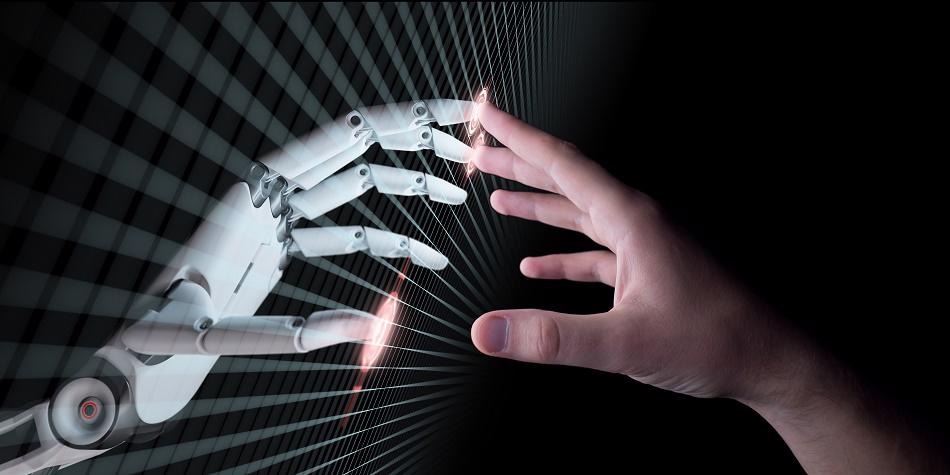
Image Credit: maxuser/Shutterstock.com
Enhancing sensory elements in the field of robotics is one of the challenges scientists and engineers face when developing technology that makes robots more ‘human’. One such element that so far has proven to be tricky to sharpen is the sense of touch which is crucial for developing robots that can work and move in close contact with humans.
Now, a team led by Professor Gordon Cheng at the Technical University of Munich (TUM) has made a breakthrough combining control algorithms with sensors to create a kind of artificial skin to gift future automatons with a new sense.
Our system is designed to work trouble-free and quickly with all kinds of robots.
Professor Cheng
Such technology that enables robots to sense their own bodies in relation to their environment is a significant leap forward for the future of human-robot work-based relationships and collaboration. Furthermore, it could even open up the opportunity for robots to become caregivers and companions to those in need.
Thus, as the robots of the future could come equipped with the sensation of touch, they would be more capable of navigating confined spaces and more likely to actively avoid any accidents that could pose a risk to their human counterparts. While Cheng and his team have been working on the artificial skin cell technology for some time, the leap in progress came when the cells were integrated with a sophisticated data handling scheme and control framework. Comprehensive details concerning the research of Cheng and his team can be found in the journal Proceedings of the IEEE.
Inspiration for Cheng’s project came by studying closely that which he and his team aimed to replicate, human skin. With around 5 million receptors, human skin is capable of detecting environmental influences on the body and sending the necessary signals to the brain. The central nervous system then determines what information is of priority for relay and this results in the perception of the stimuli. Previous robotic systems that were trying to process the data required to simulate the sensation of touch often hit upper-limits quickly and were overwhelmed with data from just a few hundred sensors.
However, Cheng and his team used over 13,000 sensors across 1260 cells to cover the body of H-1, a human-size robot. These sensors are capable of registering information relating to pressure, temperature, speed and acceleration as well as distance and proximity. Then, by integrating the cells with a system based on a NeuroEngineering approach, the artificial skin was monitored on an event-based system rather than a continuous non-stop observation.
These [factors] are fundamental to sense in humans...[they] are what make interactions between human and human very safe.
Professor Cheng
The event-based system has proven itself to be effective for Cheng and his team as they were successful in developing a working artificial skin for their human-sized H-1 robot. The skin also runs independently which means the robot does not need to be tethered to any external hardware. Cheng has stated that H-1 is capable of hugging a person “safely” as the robot can carefully calculate precise movement and pressure without risking any injury to the person. “This might not be as important in industrial applications, but in areas such as nursing care, robots must be designed for very close contact with people,” stated Cheng.
One of the next challenges of the system is scalability and advancing it further for real-world applications. The sensors used on H-1 are about the size of a two-euro coin, so the next step of the TUM team is to create smaller sensors that can be produced en masse. Yet, there are those who are skeptical about making this technology scalable because of the fragility and manufacturing cost of each individual sensor.
So, while exciting news for the future of robotics, such technology still seems some way from being implemented into any real-life scenarios as more research and development is required to ensure the safety of humans as well as finding a method to upscale the cells. However, it could be said that it is no longer unreasonable to imagine a future where robots can lend a helping hand and be sensitive to their human counterparts.
Disclaimer: The views expressed here are those of the author expressed in their private capacity and do not necessarily represent the views of AZoM.com Limited T/A AZoNetwork the owner and operator of this website. This disclaimer forms part of the Terms and conditions of use of this website.